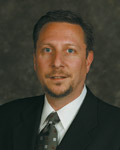September 2, 2011
Adults Can Have Crossed Eyes, Too
 By John Frederick, M.D.
By John Frederick, M.D.
Eye Surgeons Associates
Children aren’t the only patients we see with strabismus (eye misalignment). Most people with eye muscle disorders are diagnosed before five years of age. A large number of patients, however, are seen with this problem for the first time as adults.
Young people with strabismus usually have a benign disorder, rarely associated with serious disease. This is in contrast to adult patients, who are much more likely to have an accompanying illness.
Adults with acquired strabismus may also suffer from high blood pressure, diabetes, thyroid disease, stroke, aneurysm or brain tumors. Myasthenia gravis, Parkinson’s, temporal arteritis and multiple sclerosis may involve the eye muscles. Another more common cause of adult-onset strabismus is head trauma (such as a concussion during a motor vehicle accident, for example). This list mentions only a small number of the possibilities to consider when dealing with ocular motility disorders.
In children, the importance of early treatment for strabismus is to prevent visual loss and preserve binocularity (depth perception). With adults prompt examination and referral to an ophthalmologist or neurologist is necessary to diagnose the underlying cause for the eye muscle disorder. It is important to remember that many adults with strabismus may not have a serious medical disorder. This is especially true for those patients who have had an injury as the cause of their ocular motility problem; and for adults who have actually had their strabismus since childhood. A common misconception is, that if you did not have treatment for an eye muscle disorder in childhood, that nothing can be done for you as an adult. We see adults with strabismus nearly every day in our practice and have a number of treatments to offer them. Some of these patients will require surgery to restore them to the best possible ocular alignment. These operations have similar success rates in adults and children.
An important difference in the presenting history of adults with recent-onset strabismus when compared with children is the symptom of diplopia (double vision). Children very rarely complain of double vision. This is in contrast to adult patients who often seek out the care of a physician because of diplopia. Other important symptoms to ask about in adults with a new eye muscle problem include: headache, loss of vision, eyelid or facial drooping, slurred speech, and extremity weakness (stroke-like symptoms). Also ask about fever, weight loss, scalp tenderness, jaw pain when chewing, worsening joint pains and fatigue (temporal arteritis symptoms), and any changes in symptoms with certain activities, temperature or time of day.
Another frequent cause of strabismus in adults is poor vision in one eye. This may cause the affected eye to drift outward over time. This combination of problems may discourage some patients from seeking care, thinking that nothing can be done for such an “old” problem. In some cases the visual impairment may be due to a number of potentially correctable causes, such as trauma, cataract, or corneal opacity (cloudiness). If vision can be restored in these eyes by one or more procedures, occasionally the ocular alignment will improve as well. Other patients will require additional treatment for strabismus after their visual rehabilitation has been completed.
Adults with strabismus present a unique set of challenges to the eye care provider. These patients are often best served by a team approach including an ophthalmologist who specializes in pediatric eye disease and adult strabismus and a certified orthoptist (specialist in eye muscle disorders). This team will then consult with primary care physicians and other specialists depending on the cause of the eye misalignment.
Dr. Frederick, with Eye Surgeons Associates, is board-certified with a fellowship in Pediatric Ophthalmology. He is a member of the American Association for Pediatric Ophthalmology and Strabismus. Dr. Frederick practices at our offices in Bettendorf, Iowa and Rock Island and Silvis, Illinois. For more information, please see our website: esaeyecare.com.
Filed Under: Health & Wellness
Tags: Adult Onset, Adult Patients, Benign Disorder, Brain Tumors, Depth Perception, Eye Muscle, Eye Muscles, Eye Surgeons, Head Trauma, High Blood Pressure, John Frederick, Medical Disorder, Motor Vehicle Accident, Muscle Disorder, Muscle Disorders, Ocular Alignment, Ocular Motility Disorders, Strabismus, Temporal Arteritis, Thyroid Disease
Trackback URL: https://www.50pluslife.com/2011/09/02/adults-can-have-crossed-eyes-too/trackback/


